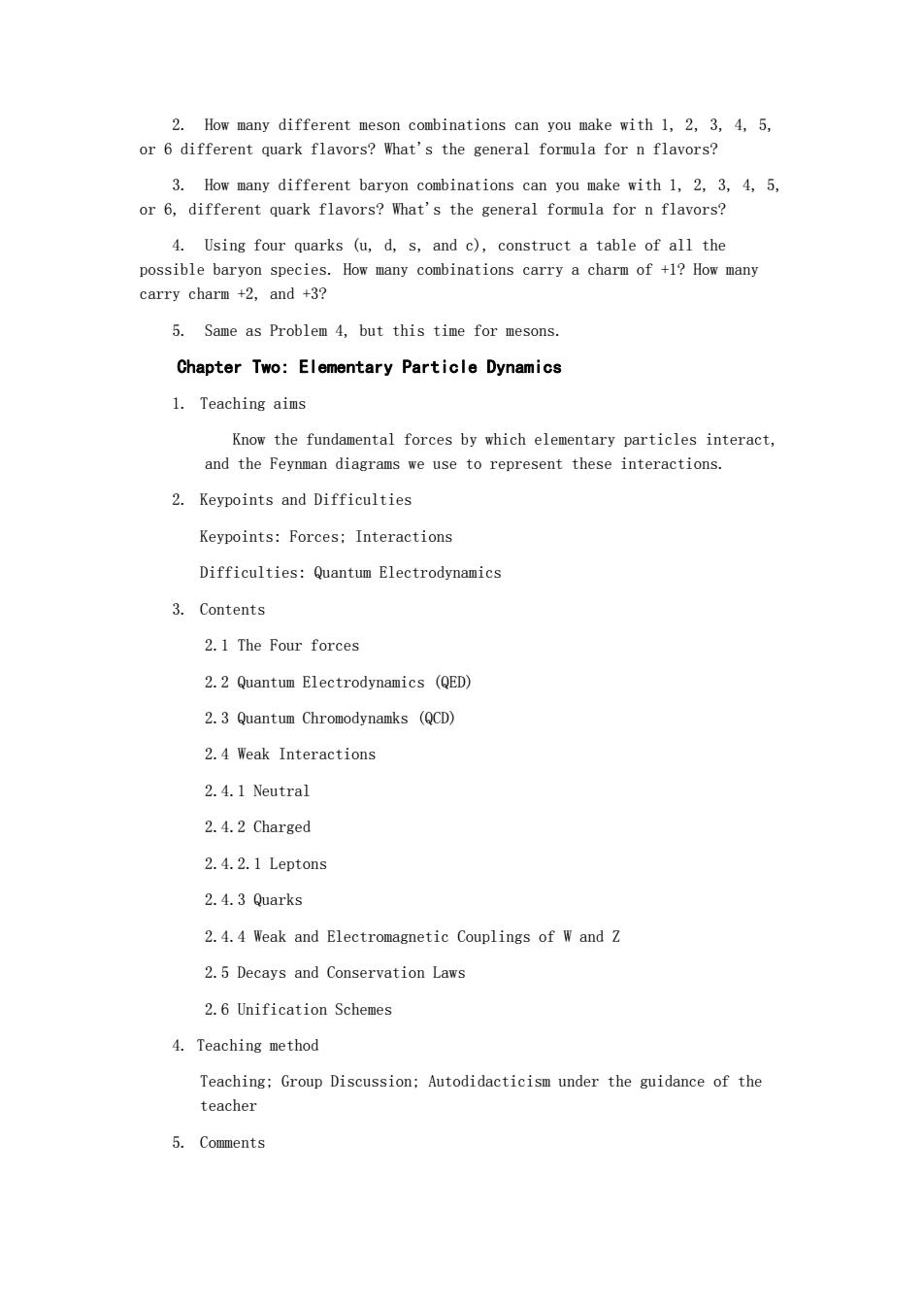正在加载图片...

2.How many different meson combinations can you make with 1,2,3,4,5, or 6 different quark flavors?What's the general formula for n flavors? 3.How many different baryon combinations can you make with 1,2.3.4,5. or 6,different quark flavors?What's the general formula for n flavors? 4.Using four quarks (u,d,s,and c),construct a table of all the possible baryon species.How many combinations carry a charm of +1?How many carry charm +2,and +3? 5.Same as Problem 4,but this time for mesons. Chapter Two:Elementary Particle Dynamics 1.Teaching aims Know the fundamental forces by which elementary particles interact and the Feynman diagrams we use to represent these interactions. 2.Keypoints and Difficulties Keypoints:Forces:Interactions Difficulties:Quantum Electrodynamics 3.Contents 2.1 The Four forces 2.2 Quantum Electrodynamics (QED) 2.3 Quantum Chromodynamks (OCD) 2.4 Weak Interactions 2.4.1 Neutral 2.4.2Charged 2.4.2.1 Leptons 2.4.3 Quarks 2.4.4 Weak and Electromagnetic Couplings of W and Z 2.5 Decays and Conservation Laws 2.6 Unification Schemes 4.Teaching method Teaching:Group Discussion:Autodidacticism under the guidance of the teacher 5.Comments 2. How many different meson combinations can you make with 1, 2, 3, 4, 5, or 6 different quark flavors? What's the general formula for n flavors? 3. How many different baryon combinations can you make with 1, 2, 3, 4, 5, or 6, different quark flavors? What's the general formula for n flavors? 4. Using four quarks (u, d, s, and c), construct a table of all the possible baryon species. How many combinations carry a charm of +1? How many carry charm +2, and +3? 5. Same as Problem 4, but this time for mesons. Chapter Two: Elementary Particle Dynamics 1. Teaching aims Know the fundamental forces by which elementary particles interact, and the Feynman diagrams we use to represent these interactions. 2. Keypoints and Difficulties Keypoints: Forces; Interactions Difficulties: Quantum Electrodynamics 3. Contents 2.1 The Four forces 2.2 Quantum Electrodynamics (QED) 2.3 Quantum Chromodynamks (QCD) 2.4 Weak Interactions 2.4.1 Neutral 2.4.2 Charged 2.4.2.1 Leptons 2.4.3 Quarks 2.4.4 Weak and Electromagnetic Couplings of W and Z 2.5 Decays and Conservation Laws 2.6 Unification Schemes 4. Teaching method Teaching; Group Discussion; Autodidacticism under the guidance of the teacher 5. Comments